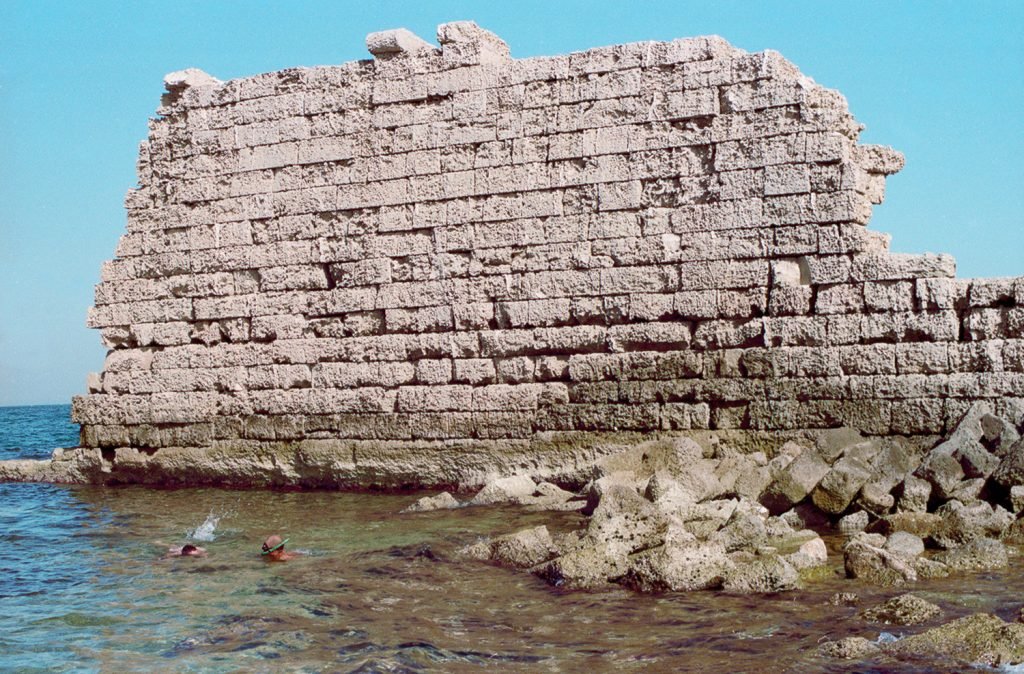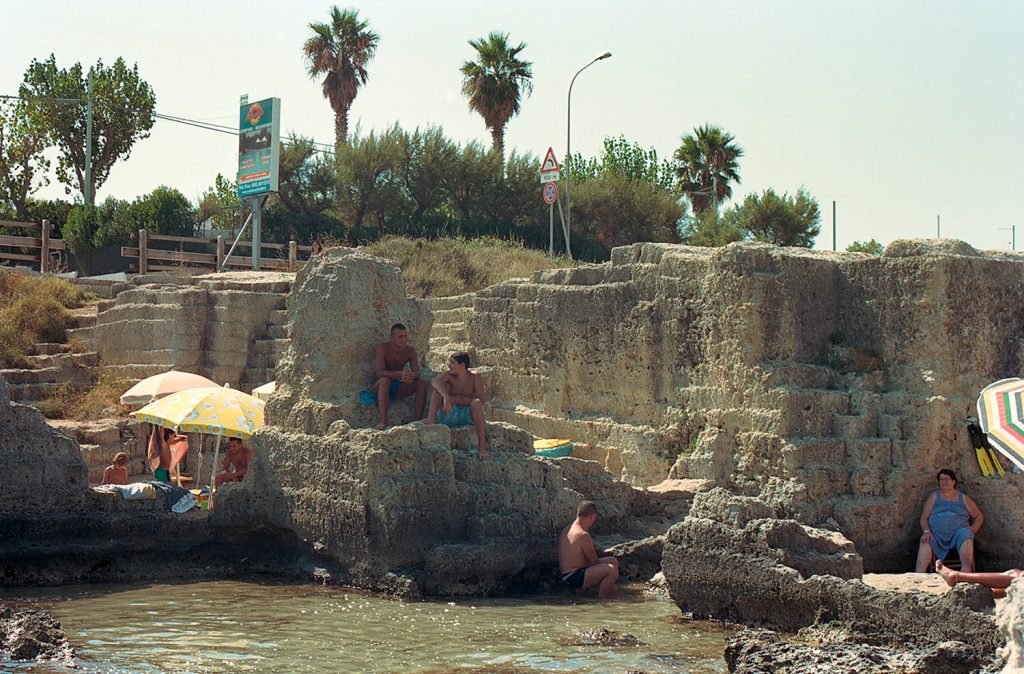Puglia as a great sculpture. Fabrizio Bellomo highlights the beauty of the architecture derived from a region eroded for thousands of years by miners with pickaxes. It is territory obtained by subtraction of matter, a utopian landscape that, as such, lends itself to new possibilities. Villaggio Cavatrulli (2010-) is a feasible idea. The images are used by the artist to demonstrate it, holding together the pieces of this great mosaic which is retinal before being translated into photography. Initially covering the territory between the province of Lecce and the coast of Bari, Bellomo moves on to analyze similar territories with similar conformation, in Matera and in Sicily (Mazala del Vallo and Favignana) He collects “resulting architecture”, visual notes of dwelling waste, large pseudo-sculptures, environmental interventions characterized by constructive spontaneity, signs in the stone that bear witness to previous uses. Photography is the means by which to experience the territory, to archive its forms, through an instinct for mapping and preservation. It is as if in retrospect the artist re-invented the extraction of stone by requalifying it as an architectural gesture, capable of generating new forms of housing, in which to rethink a particular lifestyle originating from the place. A real “village” that takes shape from photographs, reinforced by architectural design and two-dimensional-sculptural studies to enhance its particularity. Bellomo uses images in much the same way as the painters of the early twentieth century, and with photography he brings multiple subjects and photographic times together in a single image. The painter used photography to bring back to the canvas, within a single composition, different moments captured in reality. Bellomo translates into a single photographic collage the visual fragments collected over time and space, giving origin to a residential agglomeration where scenes of domestic and seaside life alternate.
The recovery of something that is destined to disappear is an integral part of the artist’s poetics, when he publishes texts, as a film director, and when he exhibits in a gallery, in his works there is often a reversal of meaning, from negative to positive, which gives rise to a reflection capable of going beyond strict disciplinary boundaries. Art as a paradigm of human evolution, the work becomes as a tool to respond to the problems of the contemporary world, are themes that bring the research of Fabrizio Bellomo closer to that conducted over the years by Peter Fend. The American artist develops projects that cover vast portions of territory, poised between art, architecture, engineering and geopolitics. Fend’s work chosen for the exhibition, Sicilia 1 (2018), enters into dialogue with the five photographs of Bellomo for topics covered and compositional technique. The subject is a map of Sicily that reproduces the surface of the region by means of lines, strokes, shadows and colours. As every map is a totally symbolic representation, but exact, it documents the surface of a territory in the various dimensional relationships. However, Fend cuts it, dividing Sicily into four parts, allowing the sea water to wet more coasts, thus redistributing the water, and therefore energy resources, over the entire surface of the island. Once again a utopian project, again collage as a means of expression, both artists highlight the need to resort to art as a laboratory in which new visions of the world can be experienced.
Luca Panaro
Fabrizio Bellomo (Bari, Italy, 1982) lives and works in Bari. Multidisciplinary artist, curator, writer and director, he carries out his research in a hybrid and experimental way. He works with archival and historical materials, video and installations. His art switches from the real world to digital. His works have been exhibited in solo and group shows, through public projects, film festivals and presentations, such as “Arcipelago Italia. Projects for the future of the country’s internal territories” – Italian Pavilion at the 16th International Architecture Exhibition of the Venice Biennale, “About a City 2019” at the Giangiacomo Feltrinelli Foundation in Milan, “Meccanici mo” at the KCB Kulturni Centar Beograda, “Talent Prize 2017” at the MACRO Contemporary Art Museum Rome, “plat (t) form 2015” at the Fotomuseum Winterthur, “Unseen 2019” in Amsterdam, “Teati i Gjelberimit” at the Galeria FAB in Tirana, “Erosioni” at the Fundació Enric Miralles in Barcelona, “ArtAr und” at the MuFoCo Museum of Contemporary Photography, “Milano, un minuto prima” at the Forma Foundation for photography, “REcall – Re-appropriation of the archaeological landscape of the European conflict” at the Nordic Embassies in Berlin, “55° Festival dei Popoli di Firenze”, “34th Cinemed – Festival International du Cinéma Méditerranéen de Montpellier”, “RaiTunes” Rai Radio2. His work has been included in international essays, such as “The Body of Solidarity: Heritage, Memory and Materiality in Post Industrial Italy” in Comparative Studies in Society and History, Cambridge University Press – Cambridge 2017, and “Luogo e identità nella fotografia italiana contemporanea”, Einaudi, Turin 2013. In the last two years, he has written regularly on la Repubblica (Apulia edition) and has collaborated with Artribune and ZERO. His latest books are “Meridiani, paralleli e pixel. La griglia come medium ricorrente”, postmedia books, Milan, and “Villaggio Cavatrulli”, Centro DI, Florence.
















